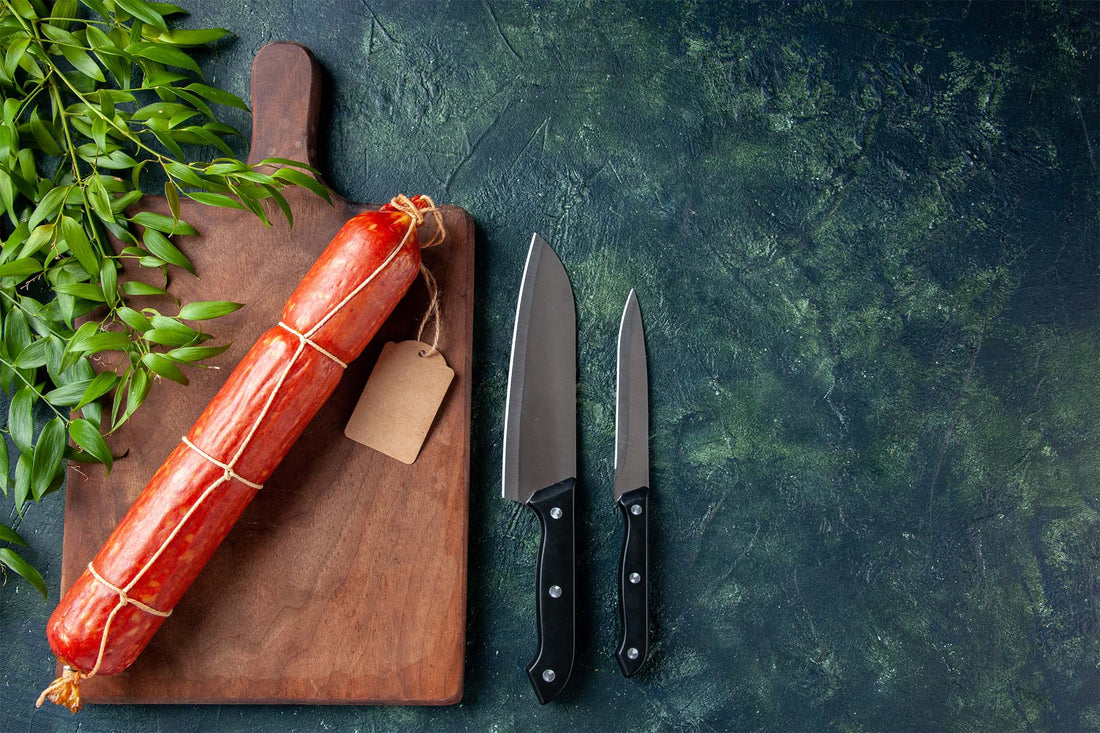The best cutting board for Japanese knives is a soft wooden board, such as those made from Hinoki wood. These boards ensure minimal edge rolling and help maintain the knife's sharpness.
Japanese knives, renowned for their razor-sharp edges and delicate construction, require careful handling and the right tools to maintain their exceptional performance. A soft wooden cutting board, particularly one crafted from Hinoki, is gentle on these fine blades, significantly prolonging their sharp edge and reducing the need for frequent sharpening.
This type of board also offers natural antibacterial properties, making it kind to your knives and hygienic for food preparation. Selecting a cutting board that matches the quality of your Japanese knives is integral to their upkeep and your culinary success. Choosing the right board, such as soft-grained varieties like Hinoki wood, protects your investment by offering a cutting surface that is both knife-friendly and enduring.
Right Cutting Boards for Your Japanese Knives
Choosing the right cutting board for Japanese knives is crucial for longevity and performance. Their precision-crafted blades require a surface that maintains sharpness and is gentle on the edge. The debate often boils down to choosing between wood or plastic surfaces, each with its advantages, and then bamboo boards, presenting a unique alternative. Let's delve into these options, focusing on what best complements the delicate nature of Japanese knives.

Wooden Cutting Boards
Wooden cutting boards have long been favored by chefs for their durability and blade-friendly characteristics. A softwood like Hinoki is particularly gentle on knife edges, making it an excellent choice for Japanese knives known for their exceptional sharpness and delicate edge geometry. Maple and walnut are also popular due to their ability to self-heal minor cuts, creating a smoother surface that helps maintain a knife's edge over time.
Pros:
Cons:
|

Plastic Cutting Boards
Plastic cutting boards are often chosen for their ease of maintenance and affordability. However, harder plastics can dull the edges of Japanese knives more quickly. It's imperative to select boards made from softer, non-abrasive plastics like polyethylene that compromise hygienic properties and blade-friendly usage.
Pros:
Cons:
|

Bamboo Cutting Boards
Another contestant in the realm of cutting surfaces is bamboo. Bamboo cutting boards are rapidly growing in popularity as an eco-friendly and sustainable material. Bamboo has a tough but forgiving surface that can be kinder to knives than the harder plastics. It is dense enough to resist scoring and thus reduces the likelihood of bacterial growth, yet soft enough not to dull the blade prematurely. Bamboo offers a middle ground with a firm structure that does not compromise the knife's edge as quickly as traditional hardwoods or plastic may.
Pros:
Cons:
|
When preserving the pristine condition of a Japanese knife, a cutting board's impact on blade sharpness weighs heavily on a chef's decision. The key is finding a board that balances durability and a soft cutting surface that minimizes blade exposure to excessive wear.
Cutting boards made from end-grain wood serve well to protect knife edges due to their ability to absorb the blade into the fibers without dulling it (Mahogany, Jatoba, etc). Opting for quality materials that ensure a longer-lasting sharp edge means more efficient prep work, less strain on your knives, and a more enjoyable cooking experience.

Proper Cleaning Techniques for Japanese Knives
Keeping your Japanese knives clean contributes to hygiene and prolongs their life and performance. It is essential to clean them immediately after use to prevent the buildup of food particles that can cause corrosion.
Hand Washing
Hand washing is the best method to clean your Japanese knives. Rine gently with warm water, using a soft sponge or cloth to clean the blade. Avoid harsh scrubbers or steel wool, which can scratch and damage the knife's surface. Use mild dish soap; harsh detergents can discolor and degrade the blade.
Drying
After washing, immediately dry your Japanese knives with a soft towel. Please don't leave them to air dry, which can lead to rusting. Ensure you also dry the handle, especially if it's made of wood, to prevent cracking and warping.
Storage
Once clean and dry, store your knives correctly. A wooden knife block or magnetic strip is preferred. Avoid storing them in a drawer where they can knock against other utensils and get damaged.
Remember, never put your Japanese knives in a dishwasher. The high temperatures and harsh detergents can cause damage, and the strong water jets can knock the knives against other items, leading to chipping or dulling of the blade's sharp edge.
Frequently Asked Questions
What Features Define the Best Cutting Board for Japanese Knives?
Japanese knives require a soft, durable surface that won't dull the blade. Look for cutting boards made from wood or high-quality rubber. Avoid glass or ceramic boards to preserve your knife's edge.
Can Bamboo Cutting Boards Protect Japanese Knife Blades?
Bamboo cutting boards are harder than traditional wood, but they are still a good option for Japanese knives. They are durable and have a natural resistance to bacteria.
Are Plastic Cutting Boards Suitable for Japanese Knives?
Yes, plastic cutting boards are suitable for Japanese knives. Choose a soft plastic that can absorb the knife's impact without dulling the blade, and ensure it's BPA-free for safety.
What Wood Is Best For Japanese Knife Cutting Boards?
Hinoki and maple woods are ideal for Japanese knives. They are softwoods that are gentle on blades, self-healing, and have natural antibacterial properties.
Conclusion
Selecting the right cutting board for Japanese knives is crucial. Aim for materials that protect edges, like end-grain wood or soft plastics. Your knives deserve the best; a quality board ensures longevity and precision. Choose wisely; your culinary tools will thank you with every clean cut.

